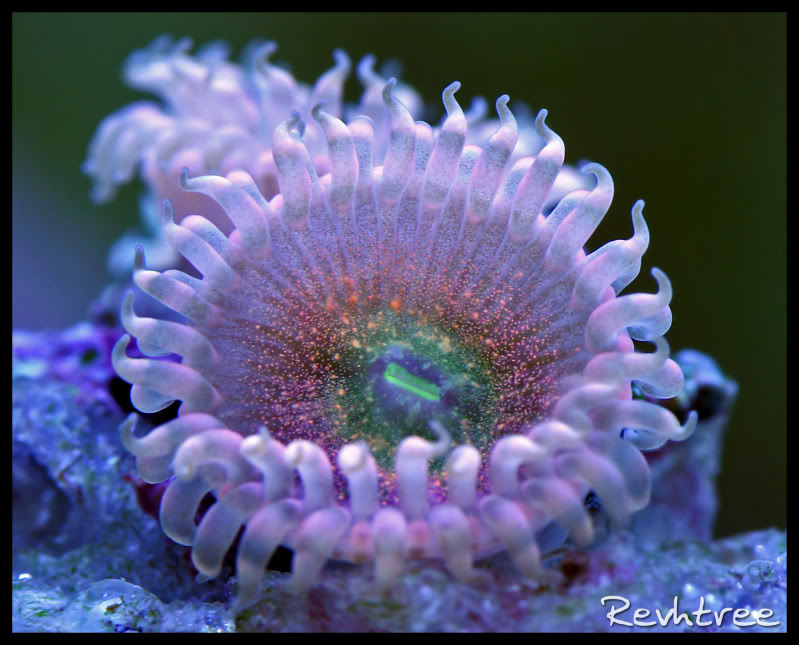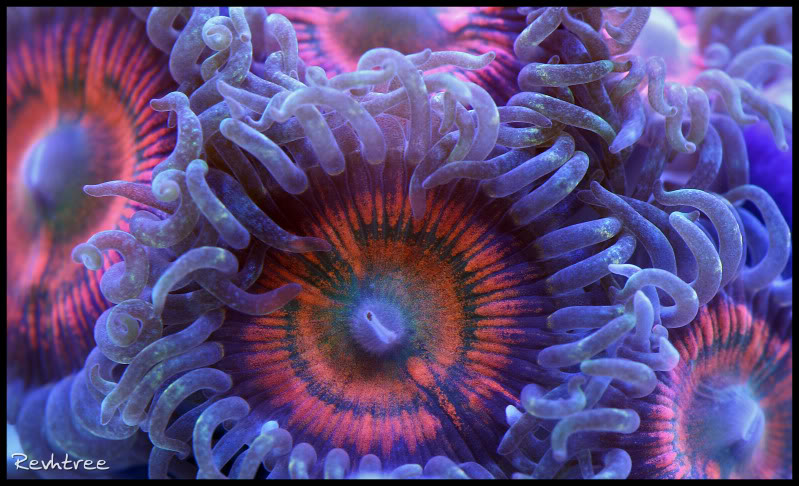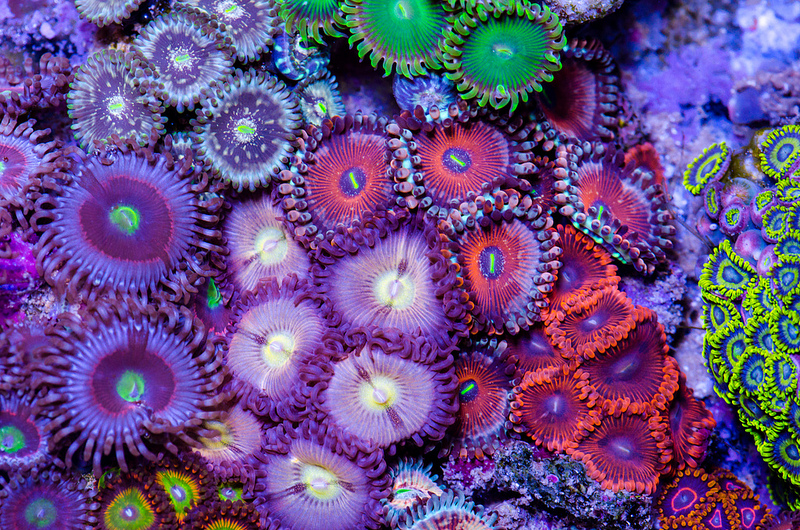Got Zoas: GENERAL ZOANTHID CARE
GENERAL ZOANTHID CARE
Zoanthids are one of the most diverse species of coral we see. They come in an infinite array of colors and color morphs. They are mostly compatible with each other, allowing multiple colors in one colony, sometimes even creating new colors. The zoanthid family is very broad and is found in every reef in the sea, so growth rates, lighting, and flow will be a game of trial and error. Luckily, most of the assorted Zoas we find are grown and propagated under similar lighting than what we use so we can create a general starting point.
Flow rate is different for all zoas, so start them in a medium flow zone. If the polyps don’t seem to want to open, try moving them into a little less current. If that fails move them to the stronger current until they poke their heads out. Flow can effect the shape of the polyps. Some grow very long tentacles in fast current and others can grow very long “stalks” in slow water. They are very adaptable corals. It will not be hard to find them a spot. The only real enemy with low flow is algae build up. This can smother a colony when left unattended. You can use a clean toothbrush to scrub any algae off the coral themselves, they are very hardy and compact to put of with the harshness of the sea.

Lighting can range from the highest of high to fairly low light. At different depths, the light penetrating the water will refract and become more blue. Zoas that live towards the surface can handle all levels of lighting and even set out of the water for hours on end on a daily basis. Since light is more likely to shock the zoas than the current, it is best to try your particular species down low first. Move it up a little bit over a couple weeks until you find its sweet spot. 6700K lighting will make them grow fast with dull coloration, but 20,000K will morph their colors into some extreme florescence. Any spectrum in between will do great.
Feeding Zoanthids is definitely very easy. They mainly eat light. Supplementing them with tiny particulate type food like phytoplankton can give them a good growth spurt. Another trick is to feed them the liquid from thawed food, but that is risking getting a phosphate buildup and algae. Zoanthids are also capable of absorbing nutrients from the substrate. A zoanthid patch will grow much more quickly on aragonite sand than it would on silica sand because there is nothing in silica sand but silica. Vitamin C will also help aid in coloration of your polyps.
Zoanthids, like all forms of life, have natural predators. Crabs can often turn on your corals, especially emerald crabs. Some fish known to eat aptasia will also nip at zoanthids. Angelfish love the juicy flesh. You also have to watch out for various hitch hikers or parasites that live off the zoas. Freshwater dips, or any type of medicating liquid can prevent bringing these predators into your tank.
Since zoanthids can handle tides, some aquarists have gone so far as to make tanks that actually have high and low tide to mimic their natural environment. This has proven to increase their slime coat, which protects them from predation and allows for less chance for algae buildup. This is not a necessary system to keep a happy zoa colony, but a very cool option.

Propagating zoas is fairly simple. They are extremely toxic, so gloves and goggles are a must. Zoas grow in a leathery mat that attaches to whatever surface they can. To frag a zoanthid colony look for a spot that looks easy to cut. You will basically be peeling a section of mat off the rock to be re-glued somewhere else. Live rock is very brittle. You can slice the razor blade right into the rock. Try to scrape the section of coral off while keeping a layer of rock on the bottom of the mat. This aids in healing and allows more surfaces for the glue to stick. You can glue them to anything. If you plan to use the cutting to propagate more, stick it on a flat surface like tile or the glass. The coral will encrust just about any surface. You can glue the cutting to a plug or straight back into your tank somewhere else to spread to joy of these great corals. Cyanoacrylate gel or Super Glue Gel is the easiest to use and cures under water.
Acclimating these corals is debatable. More and more suppliers are dry shipping zoanthids, which involves being wrapped in a moist paper towel and placed in a bag. If you receive a coral with no water, how are you supposed to acclimate it? You really can’t, however, Zoas seem to handle tank swaps pretty well. When you receive a zoanthid that is submerged it is best to just acclimate it regardless of hardiness.
Water changes will provide all they need. Keep a stable pH and ORP level. Zoas handle temperature swings pretty well, but other corals in your tank may not. These corals are very easy to keep and given the right conditions can grow in extremely high numbers. They add a great accent to most corals with their low profile bodies. There is an endless amount of designer zoanthids. The list of names is longer than the article itself!
One Response to Got Zoas: GENERAL ZOANTHID CARE
Leave a Reply
You must be logged in to post a comment.


just like the next reefer I LOVE my zoaas BUT recently I bought some zoas from a club here in ct and about two or three weeks later my prize zoa colony began closing up one sometimes two and more and more well I got on my glasses and was seeing little hair type worms upon further insp I got HYDROID DIGITA WORMS!! talk about mad im infested with them and they arew destroying EVERYTHING and I haven’t got not one intelligent answer on how TO GET RID OF THESE ROTTEN THINGS. ANYBODY HAVE AN INTELLIGENT WAY TO GET RID OF THEM?? PLEASE